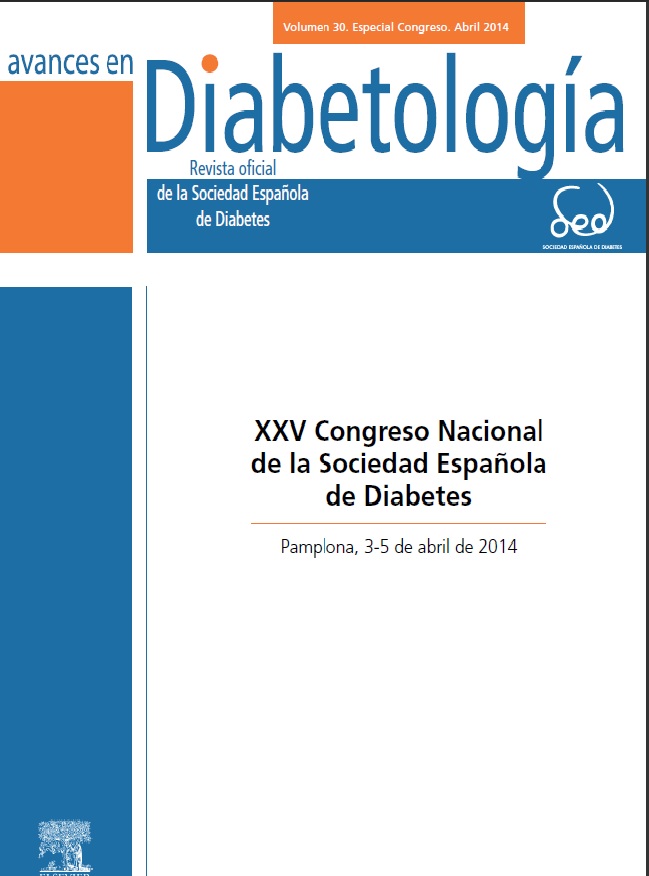O-030. - The impact of PTP1B on the survival and revascularization of transplanted islet grafts
aIDIBAPS. CIBERDEM. Barcelona. bFaculty of Medicine. Assiut. Egypt. cIDIBAPS. Hospital Clínic. Barcelona.
Introduction and objectives: Transplantation of pancreatic islet as an acknowledged curative treatment for type 1 diabetes still remains limited by post-transplantation massive islet loss and graft failure. Protein tyrosine phosphatases are essential for intracellular signal transduction modulating cell growth, apoptosis or gene transcription by maintaining critical phospho-tyrosine levels of several key proteins. Protein tyrosine phosphatase 1B (PTP1B) is a negative regulator of insulin, growth-factor signalling and recently angiogenic, migration and survival signaling pathways in endothelial cell.In the view of these data, we hypothesized that PTP1B inhibition might play an crucial role in graft survival and revascularization and therefore constitute a potential therapeutic target for islet transplantation protocols.
Material and methods: Before being submitted to transplant BALB/c mice were made diabetic through a single injection of streptozotocin (160 mg/Kg). The transplantation procedure consist in transfer into the anterior chamber of the eye Islets isolated from PTP1B+/+ and PTP1B-/- (150-200 islets/animal). Three groups of animals were constituted (n = 9 animals per group): CTRL - non-transplanted; T - transplanted with PTP1B+/+ isolated islets; and T - KO - transplanted with PTP1B-/- isolated islets. Weight, glycemic levels were evaluated during 25 days, and then cell viability and islet graft revascularization were accessed in vivo by two-photon microscopy. Post-mortem morphometric analysis and functional studies were conducted on graft-containing eyes.
Results: By the end of the 25 day, and regarding glycemic levels T group exhibited a decrease when compared to the CTRL group (T: 418 ± 48 mg/dL, CTRL: 528 ± 20 mg/dL, p < 0.05). Outstandingly, the T-KO group showed a greater decrease in glycaemia (211 ± 26 mg/dL) both when compared to the T group (49% decrease, p < 0.01) or to the CTRL group (60% decrease, p < 0.01). In vivo cell death was access bypropidium iodide injection revealing a 73% decrease in the T-KO when compared to the T group (0.25% and 0.95%, respectively; p < 0.001). Islet revascularization namely functional vasculature, was accessed by in vivo dextran injection, It was found an increase of 58% in vascular density (T-KO: 0.0297 ± 0.0035% vs T: 0.0187 ± 0.0053%; p < 0.05) and a 2-fold increase in vascularization area (T-KO: 23.180 ± 1.9% versus T: 10.027 ± 2.6%; p < 0,001) of T-KO group relatively to T group. Morphometric analyses of the graft-containing eyes support in vivo fidings, it was found a 3-fold increase in the percentage of endothelial cells within grafts (T-KO: 0.121 ± 0.0096% and T: 0.0351 ± 0.005%; p < 0,001) as well as a 62% decreased in total graft apoptotic cells of T-KO group relatively to T group (T-KO: 0.114 ± 0.037% and T: 0.0422 ± 0.0078; p < 0.05).
Conclusions: Our results support the hypothesis that PTP1B plays a negative role on the survival and revascularization of islet grafts suggesting that PTP1B may be a potential target for a post-transplantation therapy. Future work will focus on further unravelling the molecular mechanism involved in these findings.
Supported By: MICINN.SAF2010-19527; Generalitat de Catalunya 2009SGR1426 and CIBERDEM, Spain.





